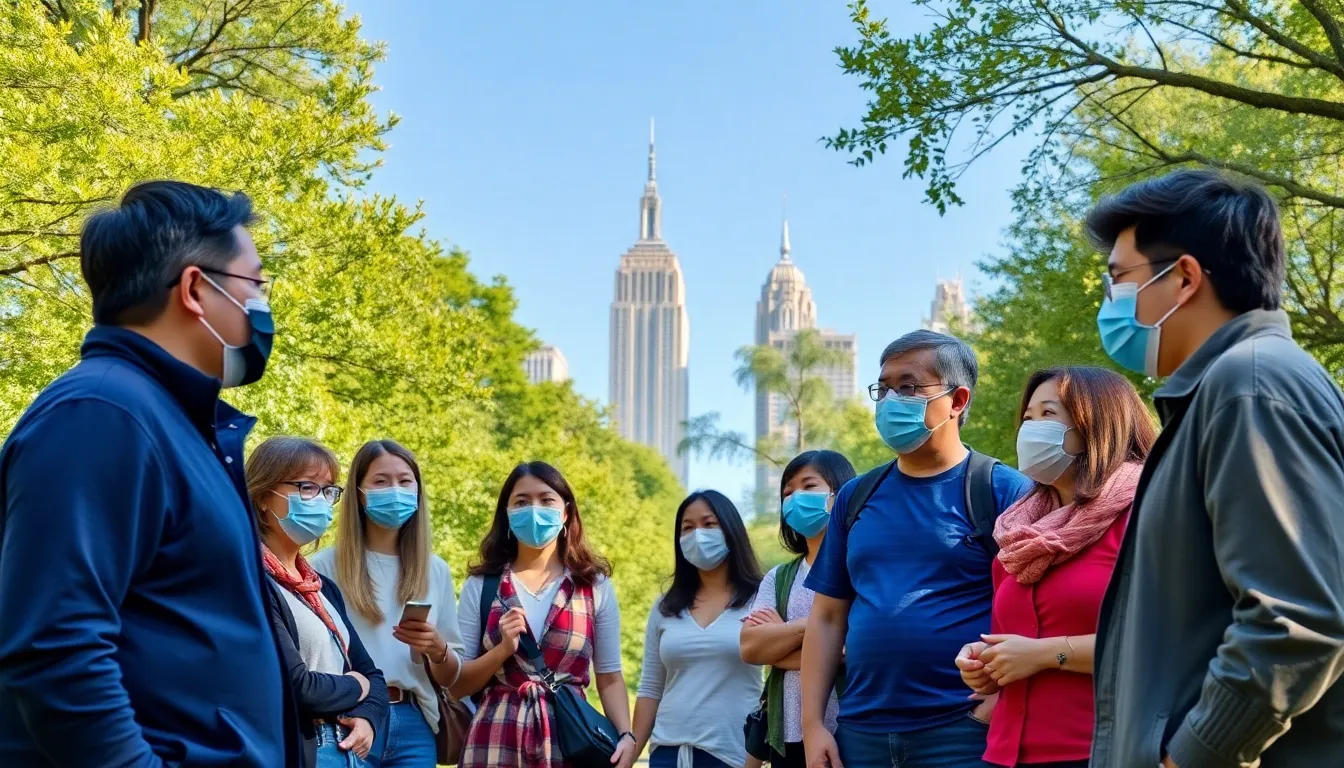As the world continues to grapple with COVID-19, questions about reinfection have become increasingly common. Many wonder if it’s possible to contract the virus more than once in quick succession. Understanding the nuances of COVID-19 reinfection is crucial for navigating personal health and public safety.
Research indicates that while immunity can develop after an initial infection, it’s not foolproof. Variants of the virus may evade the immune response, leading to potential back-to-back infections. This article dives into the latest findings on COVID-19 reinfection, shedding light on how and why it can happen, and what individuals can do to protect themselves.
Table of Contents
ToggleUnderstanding COVID-19 Reinfection
Reinfection occurs when an individual contracts COVID-19 after recovering from a previous infection. This phenomenon raises critical questions about immunity and the virus’s evolving nature.
Definition of Reinfection
Reinfection refers to a second episode of infection caused by the SARS-CoV-2 virus after an initial infection. This can happen due to waning immunity or exposure to a different variant of the virus. Health authorities define reinfection as a confirmed case where testing results indicate an individual has tested positive for the virus again, at least 90 days after their initial positive result.
Current Research and Findings
Current research indicates that COVID-19 reinfections can occur, particularly with the emergence of new variants. Studies demonstrate that immunity from past infections can diminish over time, leading to potential vulnerability to subsequent infections. For instance, a study published in the journal Nature reported that individuals previously infected with earlier strains were still susceptible to the Omicron variant. Data from the CDC indicates that reinfection rates are increasing, highlighting ongoing public health concerns. Vaccination alongside previous infection appears to enhance protective measures against severe illness associated with reinfection.
Factors Influencing Reinfection

Several factors contribute to the likelihood of COVID-19 reinfection. Understanding these factors aids in comprehending how individuals may experience consecutive infections.
Variants of Concern
Variants of concern, such as Delta and Omicron, significantly influence reinfection rates. These variants can exhibit mutations that help them evade immune responses developed from prior infections or vaccinations. Studies reveal that the Omicron variant demonstrates a higher capacity for reinfection compared to earlier strains. The CDC notes that the increased transmissibility of these variants leads to greater exposure, raising the risk of contracting the virus again.
Immune Response
The immune response plays a critical role in susceptibility to reinfection. While initial infections may generate some immunity, this protection declines over time. Research indicates that the immune system’s memory response can wane, making individuals more vulnerable to subsequent infections. Factors such as age, underlying health conditions, and the severity of the initial infection affect the durability of the immune response. Individuals with weaker immune systems or those who have experienced milder cases may face heightened risks of reinfection.
Symptoms and Severity of Reinfection
Reinfection with COVID-19 can present varying symptoms and levels of severity compared to the initial infection. Understanding these differences is crucial for management and treatment.
Differences from Initial Infection
Symptoms during reinfection may differ significantly from those experienced during the first episode. Commonly reported symptoms include:
- Fever: Often less intense than experienced in the first infection.
- Cough: Mild to moderate, frequently described as dry.
- Fatigue: Varies in severity and can persist longer than initial fatigue.
- Loss of Taste and Smell: Less commonly reported in reinfections, especially with newer variants.
- Respiratory Symptoms: Can range from mild congestion to severe breathlessness, particularly in individuals with underlying conditions.
Evidence suggests that reinfections may lead to milder illness in some individuals, but this isn’t universal. The severity can depend on several factors, including age, health status, and the specific variant involved.
Long COVID Considerations
Reinfection raises concerns regarding long COVID, a condition characterized by lingering symptoms after recovery. Individuals who experience reinfection may face:
- Persistent Symptoms: Issues such as brain fog, fatigue, and respiratory problems might appear or worsen after reinfection.
- Increased Risk: Studies indicate that recurrent infections may heighten the likelihood of developing long COVID symptoms.
- Duration of Symptoms: Some individuals report a prolonged duration of symptoms during reinfections compared to the first episode.
Health professionals continue to monitor the long-term effects of COVID-19 reinfections, focusing on strategies to mitigate risks associated with lingering health concerns.
Preventative Measures
Implementing effective preventative measures remains crucial in reducing the risk of COVID-19 reinfection.
Vaccination Importance
Vaccination plays a significant role in enhancing protection against COVID-19 reinfection. Individuals vaccinated after recovering from an initial infection exhibit stronger immune responses, providing additional defense against variants like Omicron. The CDC indicates vaccines increase the likelihood of milder symptoms if reinfection occurs, reducing hospitalization rates. Current recommendations advocate for booster doses to maintain immunity, as studies show waning protection over time. Ensuring complete vaccination status serves as a key strategy in minimizing both the incidence and severity of subsequent infections.
Ongoing Safety Practices
Ongoing safety practices are essential in limiting the spread of COVID-19 and preventing reinfection. Wearing masks in crowded or poorly ventilated spaces significantly reduces transmission risk. Regular hand hygiene, including washing hands with soap or using hand sanitizer, protects against viral exposure. Maintaining physical distance during social interactions contributes to lowering infection rates. Additionally, monitoring local transmission rates and adhering to public health guidelines ensure proactive measures against reinfection. Individuals should consider regular testing, especially after exposure or presenting symptoms, to identify infections early and seek treatment promptly.
The risk of COVID-19 reinfection remains a significant concern as new variants emerge. Understanding the factors that contribute to this risk is crucial for individual health and community safety. With waning immunity and the ability of variants like Omicron to evade immune responses, individuals must stay informed and proactive.
Vaccination continues to be a vital tool in enhancing protection against reinfection and reducing the severity of symptoms. Implementing safety measures such as mask-wearing and regular testing can further mitigate risks. By prioritizing both personal health and public safety, individuals can help navigate the ongoing challenges posed by COVID-19 reinfections.








